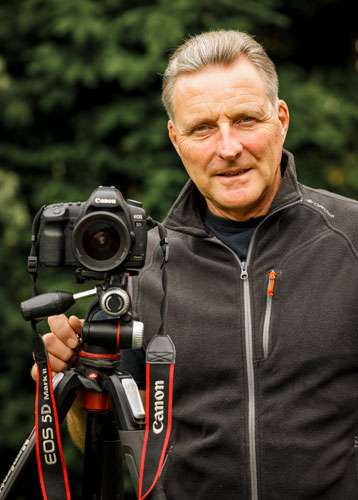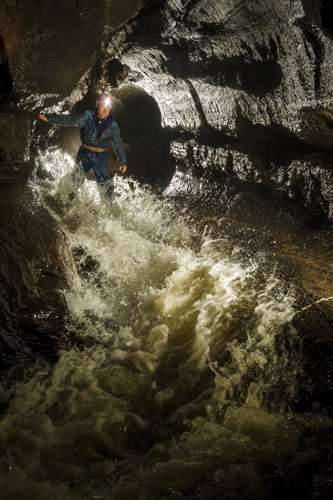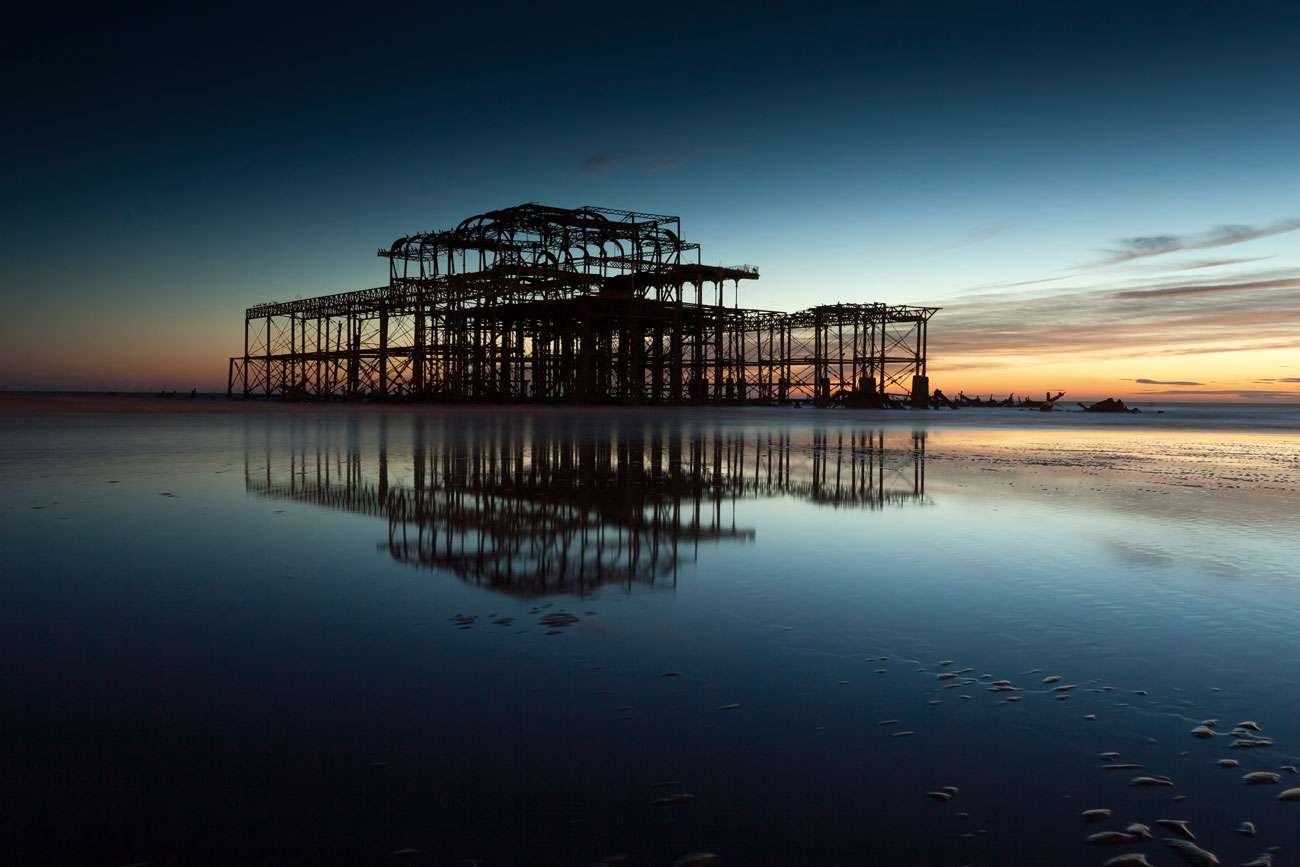
I grew up in Highcliffe, on the south coast. The beach was a twenty-minute walk from my parents’ home and my friends and I spent most of our school holidays exploring the cliffs or swimming in the sea. I was lucky, at age 11, to join a fantastic local scout group. As well as camping trips in the summer holidays and May half-term, there were lots of other activities and I would spend most weekends doing something with the scout group. We had a scout archery club and I was taken on mountaineering trips to North Wales, sea-kayaking in Dorset and caving in the Mendip Hills. Caving remains a passion of mine to this day. I bought my first camera to record all the things I was doing as a scout. I can still remember it – a 35mm Halina compact with an exposure meter on the top. The photo albums of all my scout activities are still in my mother’s loft! I soon became more and more interested in photography, and I devoured photography magazines to learn as much as I could.
I had a part-time job in the kitchen of a local pub, and I saved money to buy my first ‘proper’ camera, a Pentax MX. As I was too young to drive, my photo trips were restricted to places within reach by bicycle. I’d be down at Highcliffe beach in all weathers, and I soon realized that the light in winter often made for more interesting photos than hot summer days. I studied for A-levels at Brockenhurst College, in the heart of the New Forest, and Wednesday afternoons were reserved for extra-curricular activities. I signed up for the photography class and we would venture out into the forest to capture landscapes on black-and-white film, which we’d then process and print in a small darkroom.
By the time I was eighteen I’d decided that I wanted to earn my living doing something I enjoyed, and photography was my big passion. I sent off for college prospectuses, and applied to several photography courses. My interview at Gloucester College of Art and Design went well and I was accepted on to a three-year, full-time course. The course was a really good start to a photography career – as well as learning all the techniques of studio lighting, and processing and printing in the darkroom, we were taught all about the business and commercial side of photography. Too many photography students leave college with no understanding of how to actually make money out of their artistic skills.
While I was at college, I joined the Gloucestershire Mountaineering Club and my weekends were spent on mountains in North Wales and the Lake District; I always took my camera. I also joined a local caving club, the Gloucester Speleological Society, and we’d go caving in the Forest of Dean on Wednesday evenings. I’d already done some photography in caves while a scout, and I honed my skills, learning to use remote flashes to achieve dramatic lighting in dark cave passages.
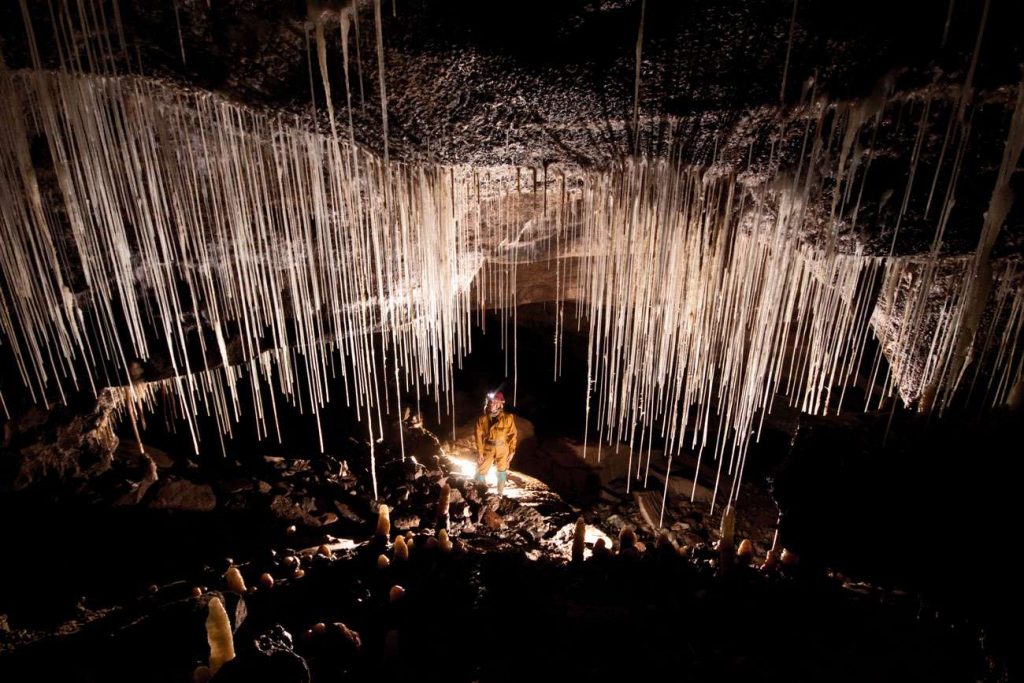
Surrounded by stalactites and stalagmites, caving in Dan-yr-Ogof, South Wales © Tony Baker
When I left college I moved back to Highcliffe, and my first job was with a commercial studio in nearby Bournemouth. My employer liked to work at the studio, so that he was always available when clients phoned, so I did mostly location work. The work was really varied – I photographed everything from hotel interiors to computer diagnostic equipment. Although I was working all week as a professional photographer, I still retained my amateur enthusiasm and I’d be out at weekends and evenings shooting landscapes. By now I had a driving licence, and the Dorset coast and the New Forest were great places to go with a camera. At college I’d learned to love the superior image quality available with larger film formats, and most of my professional work was done on big pro cameras. I bought a second-hand Mamiya RB67 camera with wide-angle and telephoto lenses, and I soon found that the large transparencies it produced would stand out on an art-director’s lightbox, especially when compared with the much smaller 35mm slides that most photographers took. I entered lots of photography competitions and submitted pictures to many magazines. Dorset Life magazine used lots of my landscape photos on their front covers. A photography magazine ran an article about me and used my pictures across seven pages – I can still remember going into WH Smith and buying all the copies they had! I also started writing technique articles for photography magazines, using my pictures to illustrate them.
By now I was a member of the South Wales Caving Club and the spectacular Welsh caves were another favourite subject. I started getting my cave pictures published, because photography magazines were interested in the techniques used to take photographs in the dark, cold, wet and muddy underground environment. I went on trips to caves in Europe and further afield. My portfolio now had a mix of my commercial work and my landscapes and cave photos, and this paid off when I saw an ad for a job as a staff photographer with a publishing company. They were specifically looking for someone to work on an outdoor activity magazine and I fitted the bill.
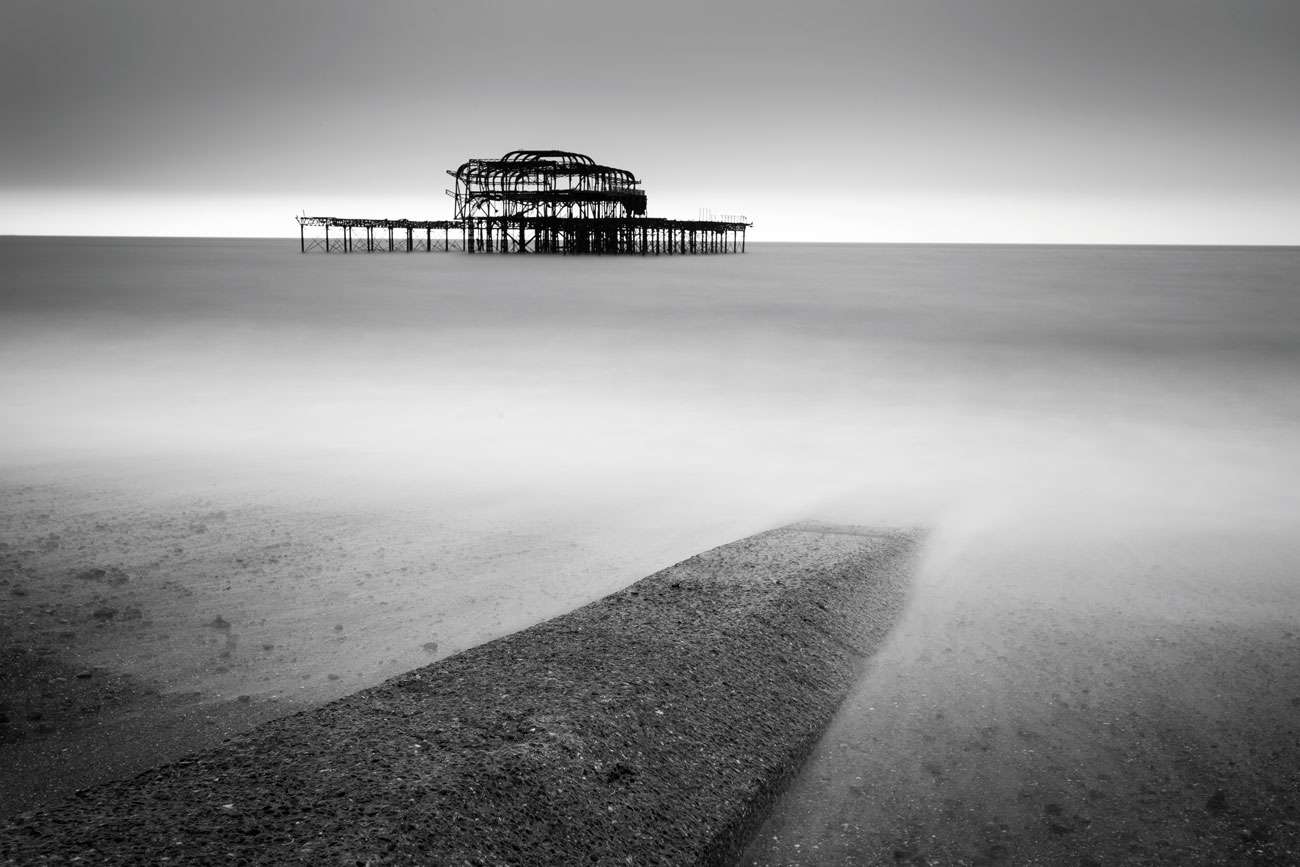
West Pier in Brighton © Tony Baker
I moved up to south-west London and spent the next three years being sent on assignments that I loved. I photographed all sorts of outdoor activities: hang-gliding, sailing, mountaineering, hill-walking and the then-new sport of mountain biking. Most of these took place in the spectacular landscapes of Wales or northern England. The company offices were in Teddington and there were ten photographers working across all the magazines. We shared a darkroom and an office in the basement and it was great fun. We shared ideas and techniques and it was always interesting to see what other photographers were doing.
Every so often, the company would sell a magazine title or buy new ones, and the photographers would all be shuffled around to work on different mags. At the same time as the company sold the outdoor magazine to another publisher it bought a weekly classic-car mag, and that’s how I became a car photographer.
An nderground stream passage in Ogof Ffynnon Ddu, South Wales © Tony Baker
I’ve never been particularly interested in cars but for a landscape photographer, cars are a dream subject. Essentially the job involves finding great locations and photographing cars in them! After a while I was moved onto a monthly magazine, Classic & Sports Car, and I remained on the staff of that for the next twenty-six years. I photographed everything from Morris Minors to McLaren F1s. Although most of the work was in the UK, I enjoyed some fantastic trips abroad. Photo shoots in Italy, France and Germany were commonplace and we often worked at car makers’ HQs. Tell a car enthusiast you’ve just been to the Ferrari factory, or to Lamborghini’s base at Sant’ Agata, and they go green with envy! I’ve done lots of shoots at famous race tracks, like the Nurburgring or Spa-Francorchamps. We did a group test of Lamborghinis in the Italian Alps, and went to Argentina to cover the Argentine equivalent of the Italian Mille Miglia event, the Mille Millas. I’ve been to lots of different US states, mostly to places that you probably wouldn’t visit as a tourist. I’ve been all over the UK and I have a big collection of Ordnance Survey maps, with interesting locations and photogenic roads all carefully marked.
A big part of the job is taking action shots. The key skill here is to convey a sense of movement, so I use a slow shutter speed and ask the owner to drive the car up and down the road a few times while I ‘follow’ the car through the camera. This is called a panning shot and the end result you’re looking for has the car pin-sharp against a blurred background. Another popular shot is the tracking shot, where you shoot your subject while being driven along in front of it. I’ve done many miles strapped into the back of my estate car! Road safety is always the key when taking action shots – you can’t risk an accident just to get a good picture. Fortunately I am always working with experienced motoring journalists, who know how to drive safely for photography, and we spend a lot of time hunting for suitably quiet roads, with good visibility, that allow for responsible photography.
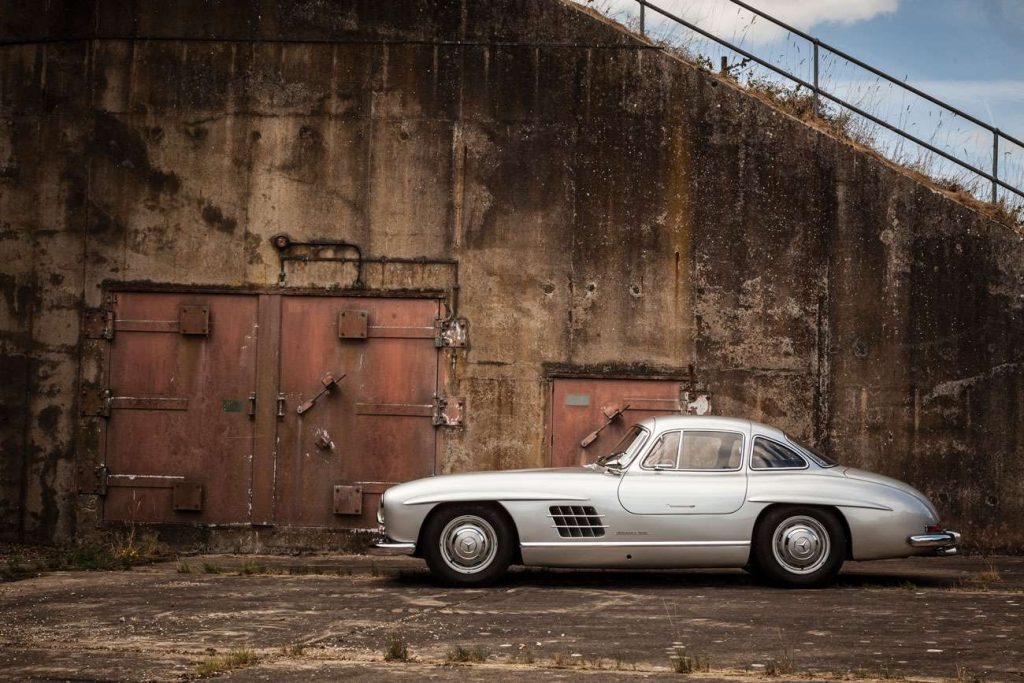
Classic 1955 Mercedes 300SL, shot at the old American airbase at Greenham Common © Tony Baker
Most car enthusiasts think that being a car photographer is a dream job, but the reality is that as a photographer you virtually never get to drive any of the cars you photograph. If I were more of a petrolhead I think I’d probably find my job very frustrating.
I learned and honed all my photography skills working with film. Then, in the early 2000s, digital cameras came along and I had to learn a whole new way of working. With film, you’d take the rolls of film to a processing lab at the end of the day, and that would usually be the end of the photographer’s involvement. With digital photography you have to spend time editing the pictures, to provide a selection of the very best images, and possibly working on them with Adobe Photoshop or other software. It’s a time-consuming process but the influence you can have on the end result is huge, compared to what you could do with film. Having said I that, I hate the phrase ‘we’ll sort it out later in Photoshop’. I’m still a firm believer in getting the pictures right at the camera stage, not relying on technology to correct things you should have done better when taking the pictures. The saying that ‘you can’t make a silk purse out of a sow’s ear’ is never more appropriate than when applied to photography.
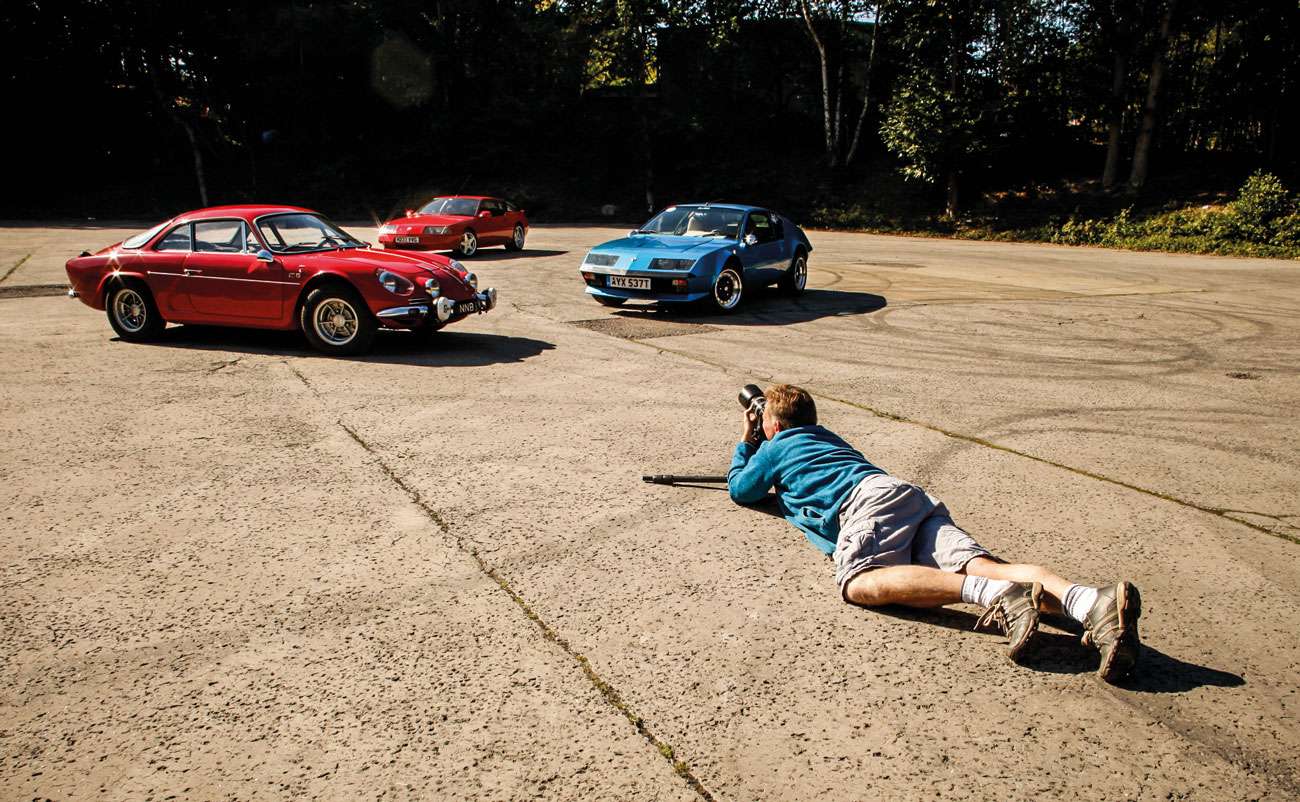
Getting down to work can produce the best shot © Tony Baker
The biggest issue facing outdoor photographers in the UK is the British weather. Monthly magazines are published throughout the year, so I’m frequently having to battle with wind and rain through the winter months. Having said that, in many ways we’re lucky in this country that our maritime climate so often produces amazing conditions; the light after a storm can be absolutely spectacular, and when you do get a sunny day in the winter the low sun provides beautiful crisp, clear light and fantastic sunsets. If only the days were a bit longer – it gets dark so early in December and January, which often means working quickly to get enough pictures for a feature that might get a lot of pages in a magazine.
We also have an amazing variety of scenery in such a small country. From just about anywhere in the UK you’re only an hour or two’s drive from landscapes that are completely different to your home patch, or to interesting coastlines. Even urban environments provide great photo opportunities; just go for a walk with your camera and an open mind.
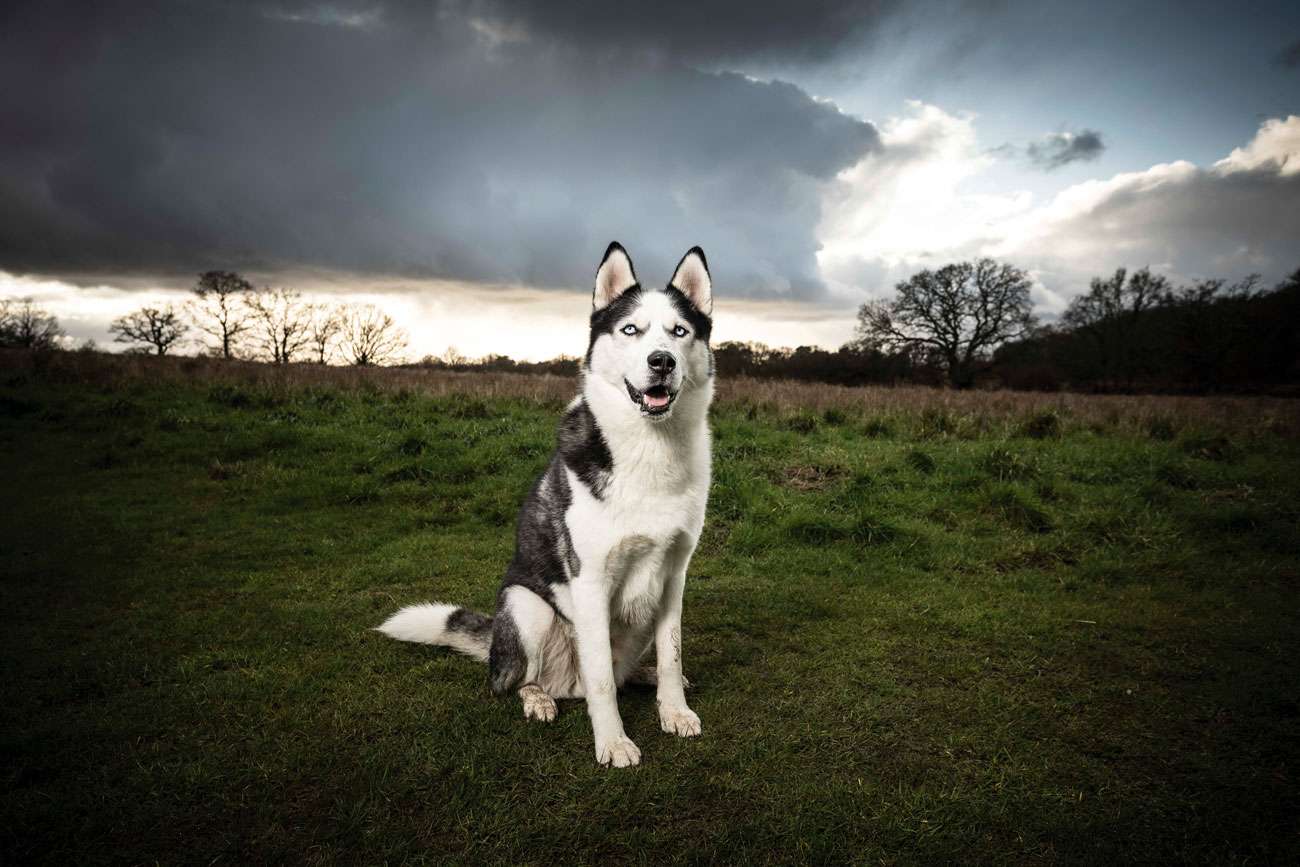
A Husky called Fonzie looking at ease in a moody landscape setting © Tony Baker
In 2018 I left the security of a staff job to go freelance. I still specialize in cars, as that’s mostly what I’m known for, and I still work for magazines, but I also work for other clients that need pictures of cars, such as book publishers and auction companies. I’ve also taken the opportunity to diversify: I’ve taken pictures for school prospectuses, among other things, and I’ve set up a business photographing dogs. As a dog-owner I decided that photographing pets would make an interesting change from cars, and I’ve created a mobile studio set-up that means I can take photographs on location that look as though they were done in a studio. Many dogs would be nervous in the unfamiliar environment of a photographic studio and they are more relaxed when I can set up my gear in their home or garden.
My career has also gone in an exciting new direction – teaching. I saw a job advertised locally, teaching Adobe Photoshop to adult learners, and after a successful first term this led to a part-time role with Surrey Adult Learning. I teach basic digital photography, as well as Adobe Photoshop and Lightroom software. I love it; digital cameras are now so advanced that anyone can take a sharp and correctly exposed picture, but most amateurs don’t realize how much better their pictures can be when they learn how to use their camera’s controls properly. I really enjoy encouraging enthusiastic photographers and watching them develop their skills. And even many experienced photographers don’t appreciate that an image from a digital camera is really just a starting point – with judicious use of post-processing software like Photoshop or Lightroom you can really make pictures that stand out. And there are so many things you can do with digital photography that were much more complicated with film. Take black-and-white, for example: if you wanted b/w pics in the days of film you needed a darkroom, an enlarger and trays full of smelly chemicals. Now you can convert a colour picture to b/w in seconds at the computer, and you have so much more control over the end result.
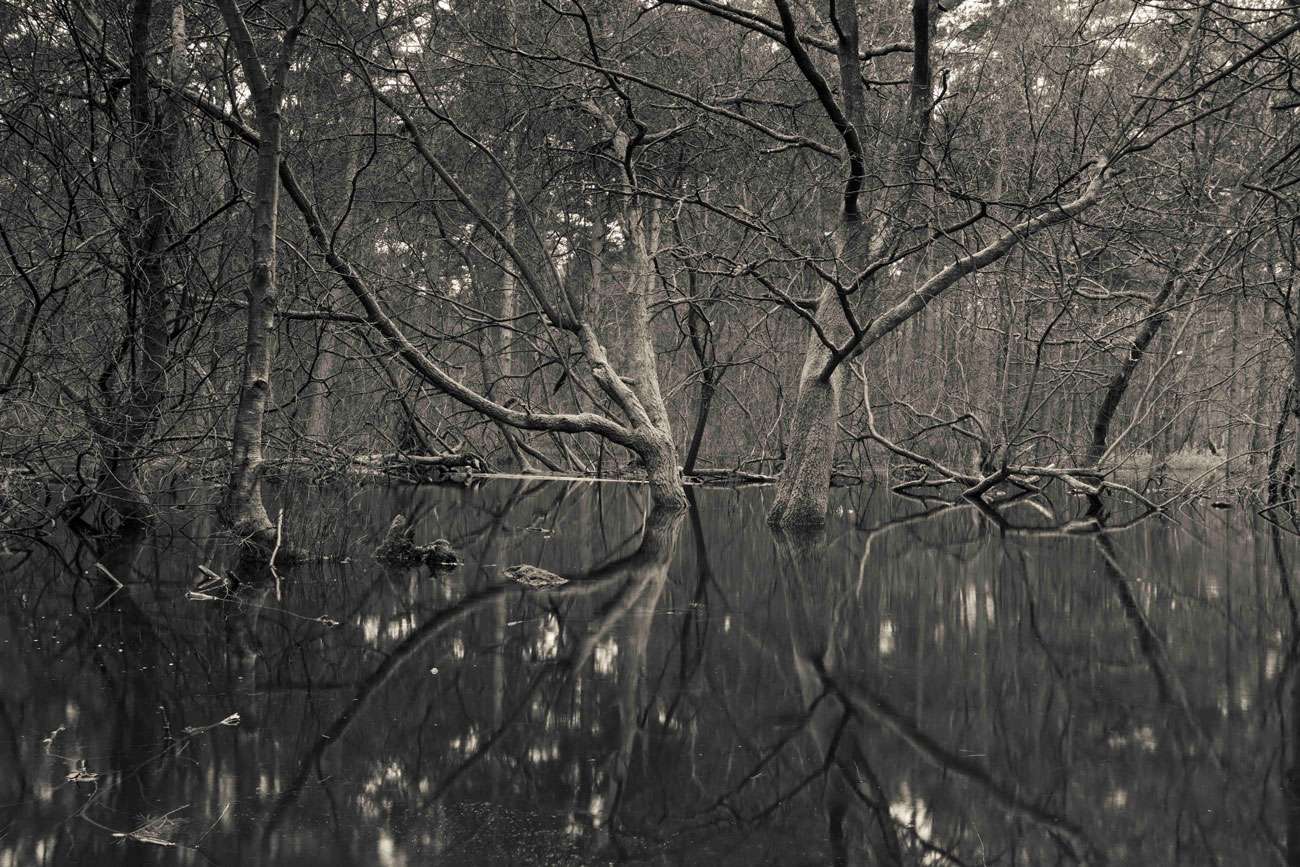
It’s amazing the beautiful sights you can see just out on a walk © Tony Baker
Photoshop in particular can be very daunting for beginners – it’s a very powerful programme but much of what it can do isn’t relevant to amateur photographers, and once you learn which tools and techniques are most useful it’s easy to master. I get a real buzz seeing the end results that learners produce after I’ve taught them for a few sessions. Recently, because of the COVID-19 pandemic, my teaching has been online via Zoom meetings, but I’m looking forward to getting back in the classroom in the autumn term; teaching face-to-face is much more engaging.
I still love my work and I still take photographs purely for pleasure. I’ve usually got a camera with me on a dog walk, and the camera bag and tripod are the first things to go in the car for a weekend away or a half-term break.
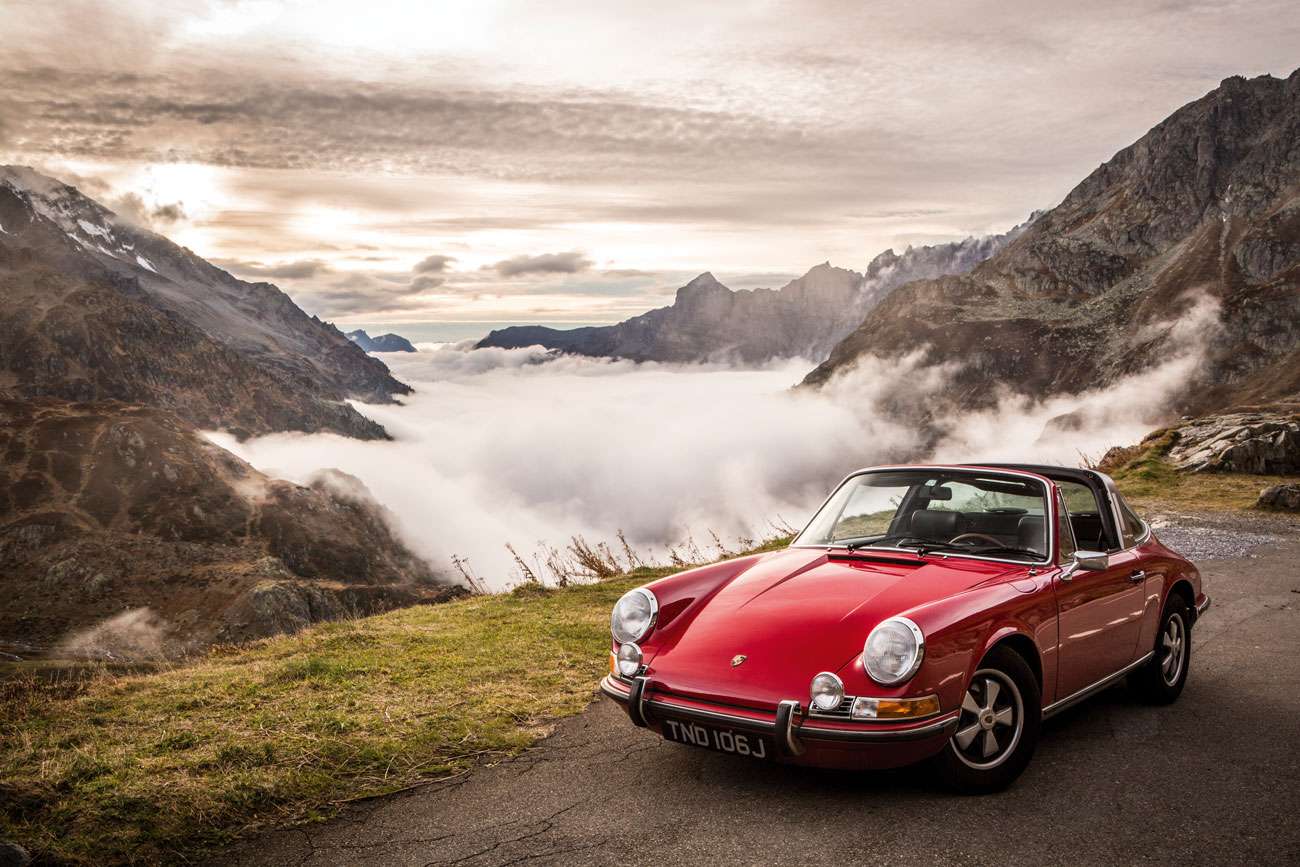
Driving back from Italy. The perfect view, the perfect parking space and the perfect car – a Porsche 911 Targa © Tony Baker
It drives my wife and son mad! But I don’t believe that you can work as a photographer without having that creative urge to create great pictures, even away from work. Believe it or not, even after a career of more than thirty-five years, I still get excited when I go to a new location with my camera or when I see some exciting weather effects developing over a scenic landscape. I often look back at my career and wonder what would have happened if I’d gone in another direction. I might have earned more money, but I doubt there are many ways to earn a living where I’d have had such a diverse range of experiences. One thing’s certain: my life would have been very different if, at age 11, I hadn’t joined that scout group.
Tony Baker is a freelance photographer specialising in automotive subjects, having spent the last 26 years as chief photographer on Classic & Sports Car magazine. For further information on photography classes, commissions or prints, contact Tony Baker:
www.tonybakercarphotography.co.uk
+44 (0) 7770 646045
Main photo: Remains of the West Pier in Brighton © Tony Baker

